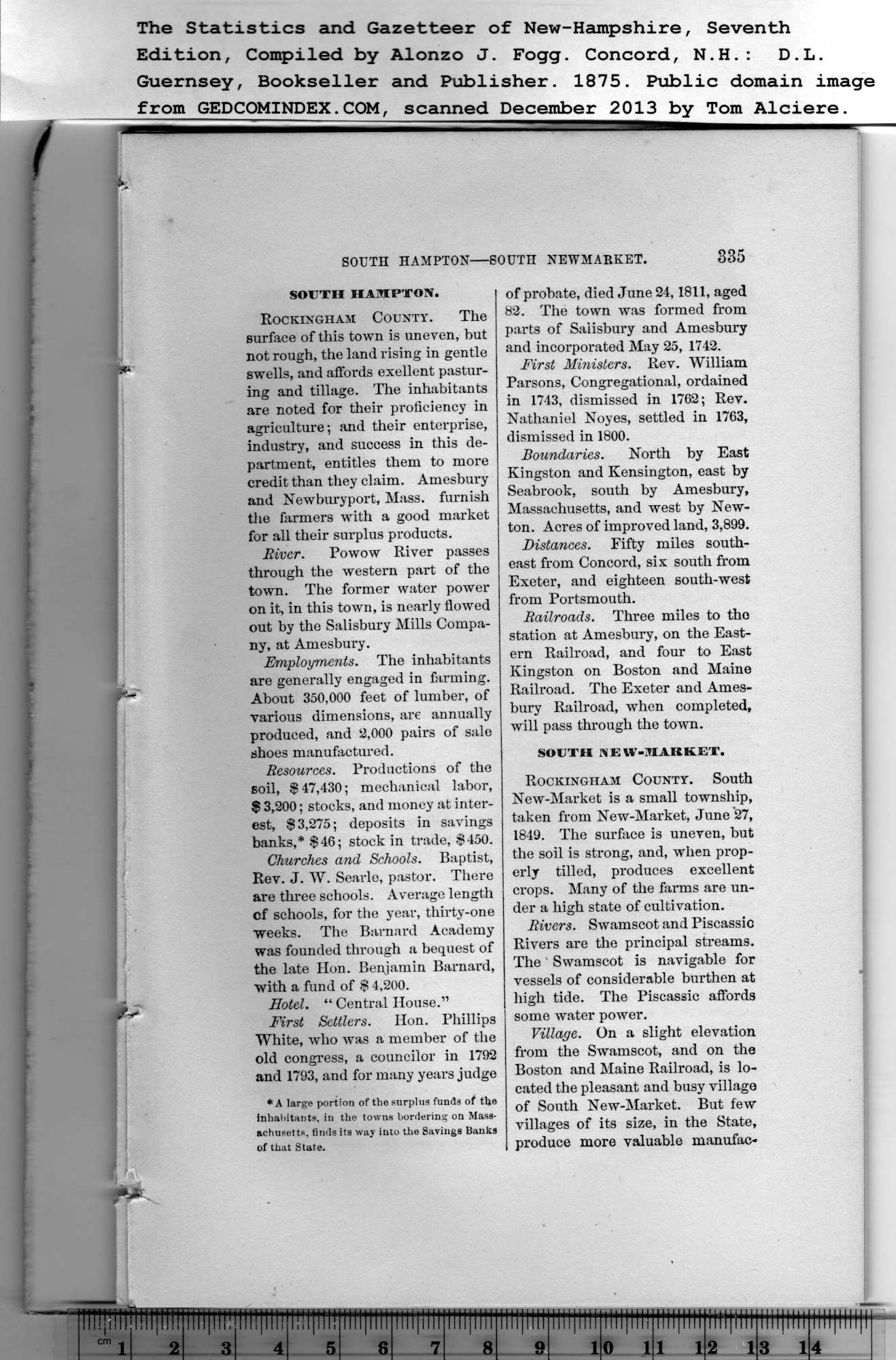|
SOUTH HAMPTON.
Rockingham County. The
surface of this town is uneven, but
not rough, the land rising in gentle
swells, and affords exellent pastur-
ing and tillage. The inhabitants
are noted for their proficiency in
agriculture; and their enterprise,
industry, and success in this de-
partment, entitles them to more
credit than they claim. Amesbury
and New bury port, Mass. furnish
the farmers with a good market
for all their surplus products.
River. Powow River passes
through the western part of the
town. The former water power
on it, in this town, is nearly flowed
out by the Salisbury Mills Compa-
ny, at Amesbury.
Employments. The inhabitants
are generally engaged in farming.
About 350,000 feet of lumber, of
various dimensions, are annually
produced, and 2,000 pairs of sale
shoes manufactured.
Resources. Productions of the
soil, $47,430; mechanical labor,
$ 3,200; stocks, and money at inter-
est, $3,275; deposits in savings
banks,* $46; stock in trade, $450.
Churches and Schools. Baptist,
Rev. J. W. Searle, pastor. There
are three schools. Average length
of schools, for the year, thirty-one
Weeks. The Barnard Academy
was founded through a bequest of
the late Hon. Benjamin Barnard,
with a fund of $ 4,200.
Hotel. “ Central House.”
First Settlers. Hon. Phillips
White, who was a member of the
old congress, a councilor in 1792
and 1793, and for many years judge
* A large portion of the surplus funds of the
inhabitants, in the towns bordering on Mass-
achusetts, finds its way into the Savings Banks
of that State. |
of probate, died June 24,1811, aged
82. The town was formed from
parts of Salisbury and Amesbury
and incorporated May 25, 1742.
First Ministers. Rev. William
Parsons, Congregational, ordained
in 1743, dismissed in 1762; Rev.
Nathaniel Noyes, settled in 1763,
dismissed in 1800.
Boundaries. North by East
Kingston and Kensington, east by
Seabrook, south by Amesbury,
Massachusetts, and west by New-
ton. Acres of improved land, 3,899.
Distances. Pifty miles south-
east from Concord, six south from
Exeter, and eighteen south-west
from Portsmouth.
Railroads. Three miles to the
station at Amesbury, on the East-
ern Railroad, and four to East
Kingston on Boston and Maine
Railroad. The Exeter and Ames-
bury Railroad, when completed,
will pass through the town.
SOUTH NEW-MARKET.
Rockingham County. South
New-Market is a small township,
taken from New-Market, June 27,
1849. The surface is uneven, but
the soil is strong, and, when prop-
erly tilled, produces excellent
crops. Many of the farms are un-
der a high state of cultivation.
Rivers. Swamscot and Piscassic
Rivers are the principal streams.
The Swamscot is navigable for
vessels of considerable burthen at
high tide. The Piscassic affords
some water power.
Village. On a slight elevation
from the Swamscot, and on the
Boston and Maine Railroad, is lo-
cated the pleasant and busy village
of South New-Market. But few
villages of its size, in the State,
produce more valuable manufac- |
